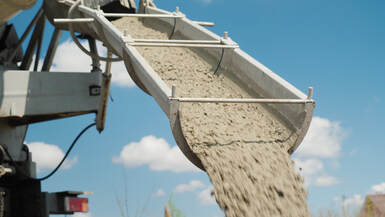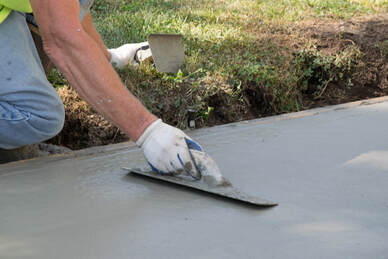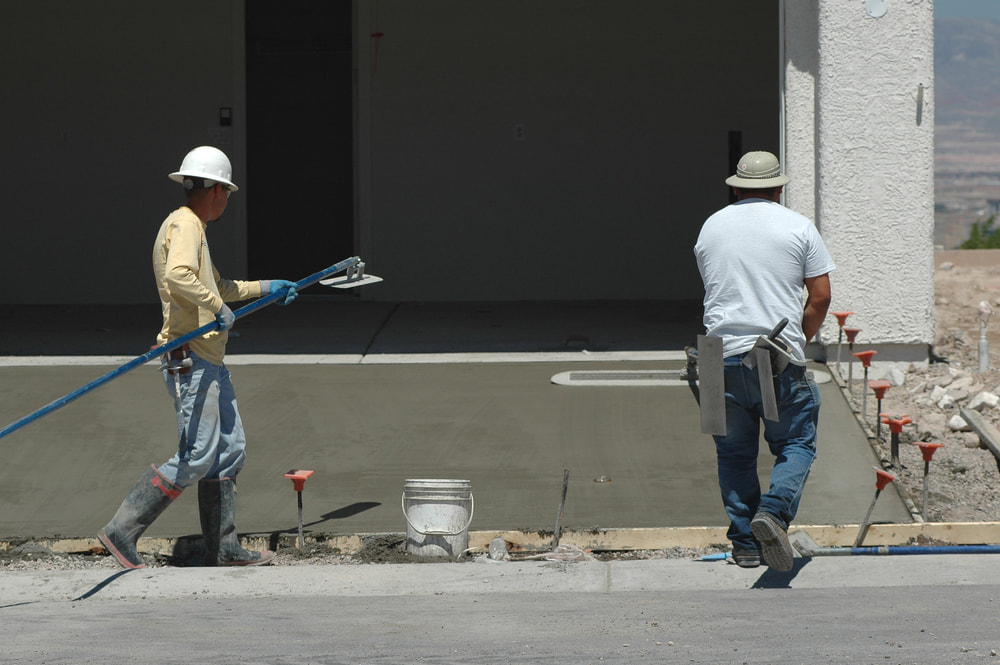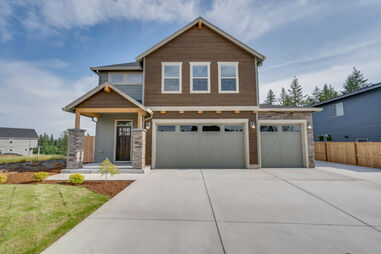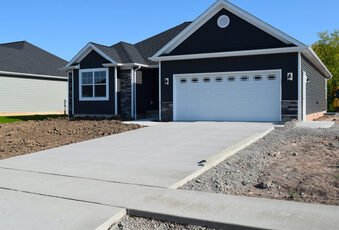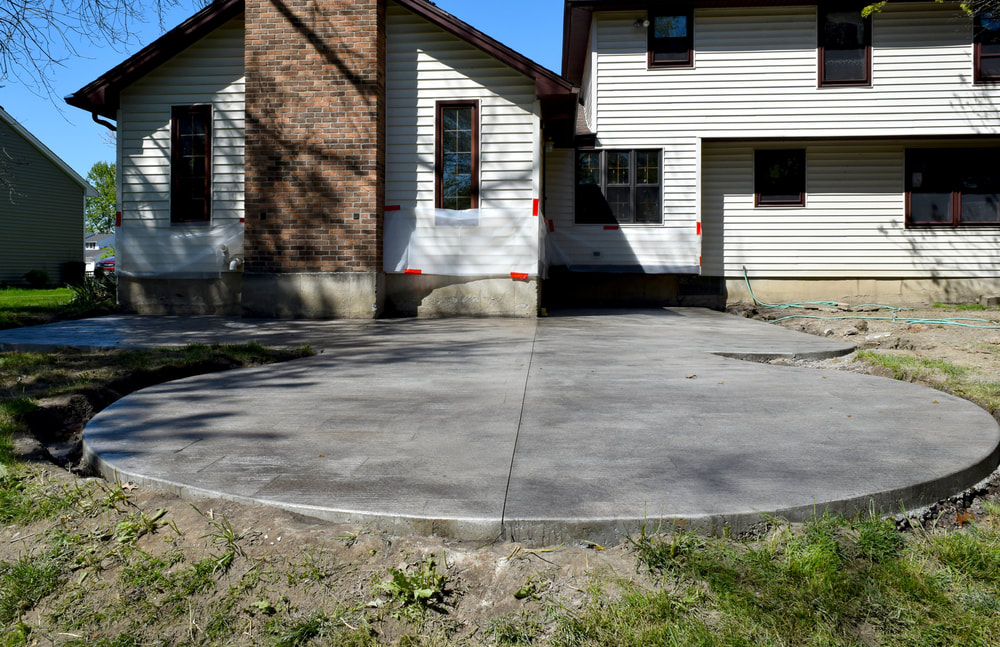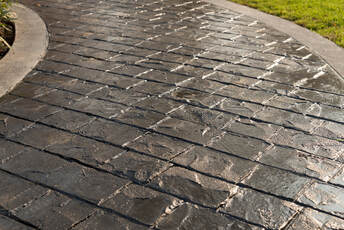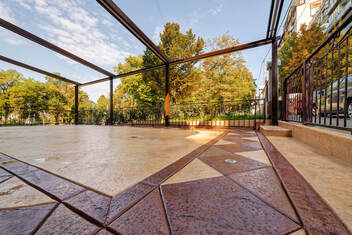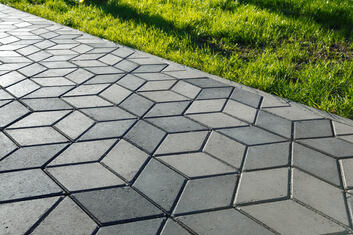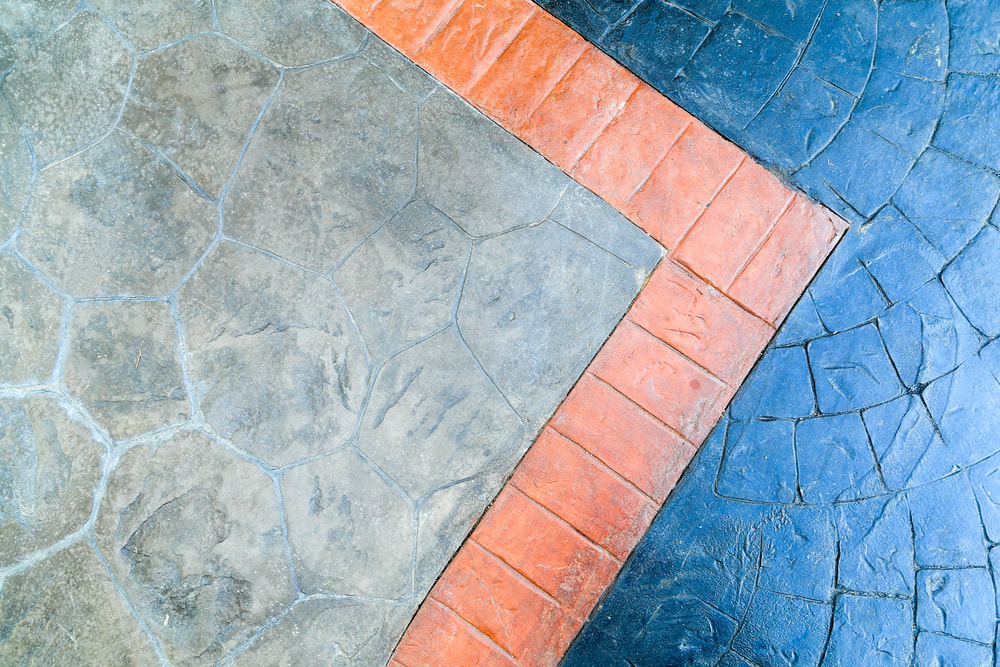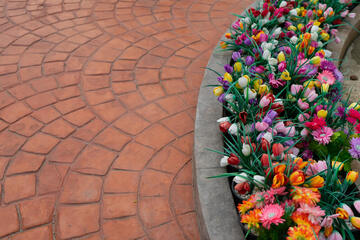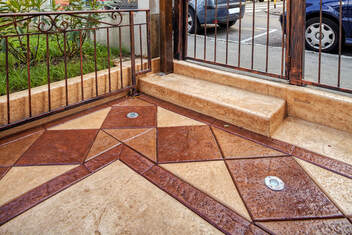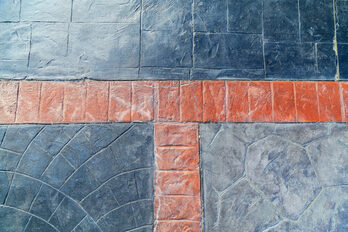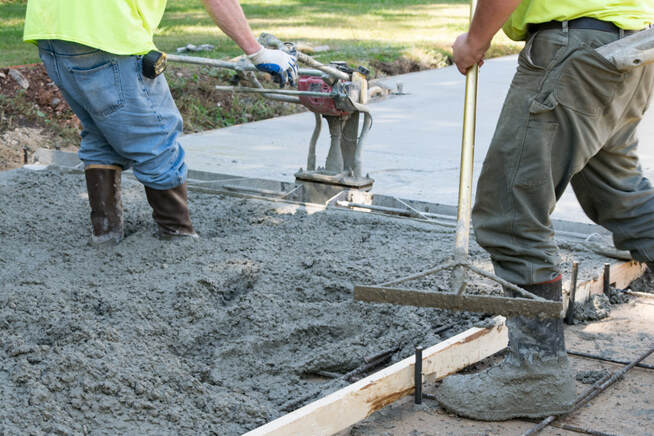Brownsburg Concrete Pros
|
|
Concrete Services We Offer
DrivewaysFrom new construction to remodels, Brownsburg Concrete Pros can add a traditional looking driveway to your home that will b functional and long lasting, adding value to your home. Our crews can tear out an existing worn out and cracked driveway in about a day, and by the end of the week you car have a new, longer lasting driveway that you will be proud of. Why not give us a shot?
|
PatiosThere are several advantages to having a concrete patio over a wooden deck.
Durability: Concrete is a very durable material that is resistant to rot, decay, insect damage and is usually more permanent than asphalt paving methods. A well-made concrete patio can last for decades with minimal maintenance, whereas a wooden deck may require frequent repairs and eventual replacement... |
WalkwaysConcrete Walkways can be more than just a functional way to traverse your property. When installed properly, a concrete walkway can give your property a unique and beautiful look that not only will last for years, but will have your neighbors green with envy. Why not fill out the contact form on this website and lets make your property the "jewel of the neighborhood"
Let's make the neighbors green with envy! |
What is the Difference Between Decorative Concrete and Stamped concrete?
Decorative concrete and stamped concrete are both types of concrete that are used to add visual appeal to a concrete surface. However, they achieve this in different ways.
Decorative concrete refers to the use of special techniques or materials to enhance the appearance of concrete. This can include adding color to the concrete mix, using special finishing techniques to create a textured surface, or adding decorative elements such as inlays or stencils to the surface.
Decorative concrete can be used on both new and existing concrete surfaces.
Stamped concrete, on the other hand, is a type of decorative concrete that involves imprinting a pattern or texture onto the surface of wet concrete before it dries. The pattern can mimic the look of natural stone, brick, or other materials, and it is created using specialized stamps or molds. Stamped concrete is often used to create a more attractive and durable surface for driveways, patios, and other outdoor surfaces.
In summary, decorative concrete refers to any technique or material used to enhance the appearance of concrete, while stamped concrete involves imprinting a specific pattern or texture onto the surface of the concrete.
A professional concrete contractor like Brownsburg Concrete Pros can do all this work for you
Decorative concrete refers to the use of special techniques or materials to enhance the appearance of concrete. This can include adding color to the concrete mix, using special finishing techniques to create a textured surface, or adding decorative elements such as inlays or stencils to the surface.
Decorative concrete can be used on both new and existing concrete surfaces.
Stamped concrete, on the other hand, is a type of decorative concrete that involves imprinting a pattern or texture onto the surface of wet concrete before it dries. The pattern can mimic the look of natural stone, brick, or other materials, and it is created using specialized stamps or molds. Stamped concrete is often used to create a more attractive and durable surface for driveways, patios, and other outdoor surfaces.
In summary, decorative concrete refers to any technique or material used to enhance the appearance of concrete, while stamped concrete involves imprinting a specific pattern or texture onto the surface of the concrete.
A professional concrete contractor like Brownsburg Concrete Pros can do all this work for you
Examples of Stamped Concrete
Can Concrete Be Stained Giving it a More Pleasing Look?
Yes, concrete can be stained to give it a pleasing look. Concrete staining is done by applying a colored liquid to the surface of the concrete to give it a new color or finish. The stains can be applied in a variety of patterns and colors to create a wide range of effects. Stained concrete can be a relatively simple and inexpensive way to improve the appearance of a concrete surface, such as a floor, patio, or driveway.
There are two main types of concrete stains: acid-based and water-based. Acid-based stains are made from water, acid, and inorganic salts, and they react chemically with the concrete to create a permanent, variegated color. Water-based stains are made from water and pigments, and they work by penetrating the pores of the concrete and staining it. Water-based stains are generally easier to apply and maintain than acid-based stains, and they are also less toxic and safer to use.
To apply a concrete stain, the surface of the concrete must be clean and dry. Any dirt, grease, or other contaminants should be removed, and the surface should be allowed to dry completely. The stain can then be applied using a brush, roller, or sprayer, and it should be allowed to penetrate the concrete for a period of time before being wiped off or washed away. Depending on the type of stain used and the desired effect, multiple coats of stain may be applied, and the surface may also be sealed to protect the color and finish.
Brownsburg Concrete Pros can do concrete staining for you at a price that won't break the budget
How is Concrete Made?
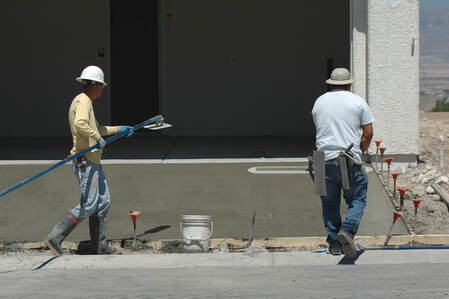
Concrete is made by mixing together cement, water, and aggregate (such as sand, gravel, or crushed stone). The cement is a powder that acts as a binding agent when mixed with water, and it is made by grinding together a variety of materials that include limestone, clay, and gypsum. The water activates the cement and causes it to harden, or cure, over time. The aggregate is added to the mix to provide strength and bulk to the concrete.
To make concrete, the cement, water, and aggregate are mixed together in a concrete mixer or by hand. The mixture is then poured into a form or mold, which can be any shape or size, and it is left to harden. As the concrete cures, it becomes stronger and more durable. The curing process can be accelerated by adding curing compounds to the mix or by keeping the concrete wet and warm while it cures.
There are many variations of concrete that can be made by adjusting the ratio of the ingredients or by adding additional materials to the mix. For example, concrete can be made to be more resistant to water or to freeze-thaw cycles by adding special admixtures to the mix. Concrete can also be colored or textured by adding pigments or by using special finishing techniques.
To make concrete, the cement, water, and aggregate are mixed together in a concrete mixer or by hand. The mixture is then poured into a form or mold, which can be any shape or size, and it is left to harden. As the concrete cures, it becomes stronger and more durable. The curing process can be accelerated by adding curing compounds to the mix or by keeping the concrete wet and warm while it cures.
There are many variations of concrete that can be made by adjusting the ratio of the ingredients or by adding additional materials to the mix. For example, concrete can be made to be more resistant to water or to freeze-thaw cycles by adding special admixtures to the mix. Concrete can also be colored or textured by adding pigments or by using special finishing techniques.
How Does Concrete Get From the Factory to My Project?
There are several ways that a concrete company can get the concrete to your home:
- Ready-mix trucks: Most concrete companies offer ready-mix concrete, which is a mixture of cement, water, and aggregate that is mixed at a central plant and delivered to the job site in a truck equipped with a rotating drum. The truck can be driven to your home and the concrete can be discharged directly into a form or mold, or onto the ground for spreading and finishing. Concrete pouring is then begun on site.
- Concrete pumps: Concrete pumps are mechanical devices that use a hose to transfer wet concrete from the truck to the job site. This is a convenient option when the job site is not easily accessible by a ready-mix truck, or when the concrete needs to be placed at a specific location that is difficult to reach.
- Concrete mixers: Some smaller concrete companies may use a concrete mixer to mix the concrete on-site. The mixer is a portable machine that mixes the cement, water, and aggregate together to create the concrete. The mixed concrete is then transported to the job site in a wheelbarrow or on a small trailer.
- Pre-cast concrete: In some cases, concrete companies may manufacture pre-cast concrete products, such as blocks, panels, or pipes, at a central plant and then transport them to the job site for installation. Pre-cast concrete products are typically made in a controlled environment using specialized equipment and are cured before they are delivered to the job site.
Why Use Brownsburg Concrete For Your Project?
|
Professional
We are concrete contractors who will conduct themselves in a professional manner that will gain your trust. We work hard to maintain a positive relationship with our clients & communicate to them
|
Knowledgeable
We have many years of experience in the concrete and construction industry and have gained a lot of knowledge over the years. There is not much that we haven't seen or been faced with.
|
Committed
Once we identify the proper course of action to address your specific project, we won't stop until we are happy with the results and your expectations have been met.
|
The installation of concrete in and around your home can disturb the natural habitat of insects and pests. If you ever need a good pest control service, our partners at Pest Control of Carmel would be happy to help out! We also have referrals available if you're looking for insulation services as well as a painting company too!


